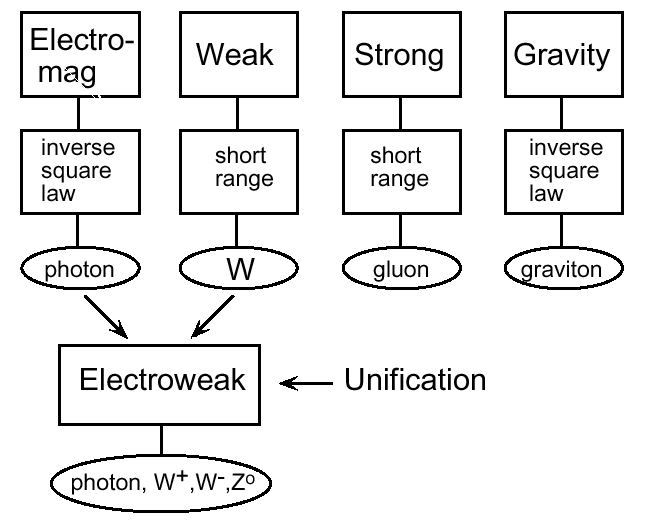Electroweak Theory

http://www.hep.ucl.ac.uk/undergrad-projects/3rdyear/EWuni/webpage/images/unfication.gif
Back before the great James Clerk Maxwell and his unification
of the electric and magnetic forces, the two forces where thought to have
been two completely different forces. But then in the mid-1800's Maxwell with
his great equations was able to show that the electric and magnetic forces
were one and the same, which greatly leaped the world of physics closer to
the Unified Field theory. Then almost a hundred years later Dr. Abdus Salam
and others in the field of particle physics developed the electroweak theory
sometime between1961-1967 which like the great Maxwell flung the world of
physics even closer this unification of the natural forces.
"The electroweak theory introduces particles that act as
mediators of weak interactions in the same way that photons mediate electromagnetic
interactions. These particles, the W and Z bosons, again like the photon,
carry one unit of spin. In the electroweak theory, these four particles (photons,
W¯, W+, and Z°) are closely related. The strength of the interaction
of the W and Z bosons is comparable to that of the photon.
|
Unified Electroweak
|
Mass
(GeV/c2) |
Electric Charge
(e) |
|
|
photons
|
Photon
|
0
|
0
|
|
W¯
|
W boson
|
80
|
+1
|
|
W+
|
W minus boson
|
80
|
-1
|
|
Z°
|
Z boson
|
91
|
0
|
However, unlike the photon, the W and Z bosons are massive. This causes the
beta decay weak interactions to occur at rates much lower than electromagnetic
decays (which produce photons) with comparable energy release. The mass of
the exchanged particle also leads to an interaction probability that falls
off much more rapidly with distance than in the electromagnetic case."
http://www2.slac.stanford.edu/vvc/theory/electroweak.html
| Basic Quantum Electrodynamics |